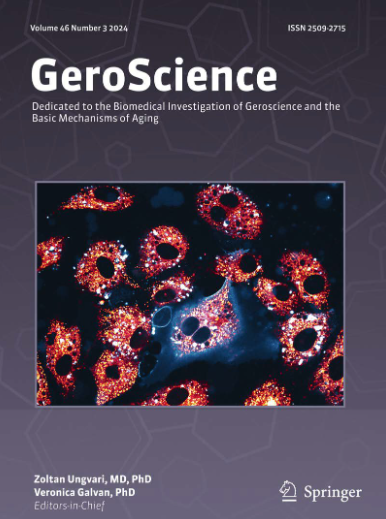Ambient air pollution exposure accelerates the occurrence of 78 non-communicable chronic diseases: an accelerated failure time analysis of a nationwide cohort.
IF 5.4
2区 医学
Q1 GERIATRICS & GERONTOLOGY
引用次数: 0
Abstract
Ambient air pollution is a well-established risk factor for chronic diseases, but its impact on disease onset age remains unclear. This study systematically evaluated the acceleration effect of air pollutants on the onset of 78 chronic diseases using over 900,000 hospitalization records from 396,000 UK Biobank participants. Both particulate matter and nitrogen oxides were associated with accelerated onset of 46 out of 78 diseases (9 cardiovascular diseases, 7 respiratory diseases, 14 psychological/neurological disorders, 3 digestive diseases, 2 cancers, and 11 other chronic diseases). Significant associations including those for common chronic diseases were observed. Each interquartile range (IQR) increase in PM2.5 was strongly associated with a 0.93% (95% CI-0.86%, 1.00%) decrease in age at onset (AAO) of hypertension. Similarly, NOx was associated with a 0.96% (95% CI-0.82%, 1.09%) decrease in AAO of COPD, PM10 with a 0.95% (95% CI-0.81%, 1.09%) decrease in AAO of diabetes, and NO2 with a 0.88% (95% CI-0.77%, 1.00%) decrease in AAO of dementia. Notably, we observed that neurological/psychological disorders were observed to be mostly affected, including schizophrenia, dystonia, polyneuropathies, and migraine, with 1 ~ 3% reduction in the AAO. On a population level, PM2.5 overexposure (exceeding the WHO guideline of 5 μg/m3) accounted for 539,320 person-years of accelerated AAO across 78 chronic conditions, with hypertension (18.10%), asthma (6.03%), and diabetes (5.39%) contributing the most. This study provides the first evidence that air pollutants could accelerate onset of common chronic diseases. Findings highlight the urgent need for measures to improve air quality to slow progression of disease development.接触环境空气污染加速了78种非传染性慢性病的发生:一项全国性队列的加速失效时间分析。
环境空气污染是一个公认的慢性病风险因素,但其对发病年龄的影响尚不清楚。这项研究系统地评估了空气污染物对78种慢性疾病发病的加速效应,使用了来自39.6万名英国生物银行参与者的90多万份住院记录。颗粒物和氮氧化物都与78种疾病中的46种(9种心血管疾病、7种呼吸系统疾病、14种心理/神经系统疾病、3种消化系统疾病、2种癌症和11种其他慢性疾病)的加速发病有关。观察到包括常见慢性疾病在内的显著关联。PM2.5每增加一个四分位数范围(IQR)与高血压发病年龄(AAO)下降0.93% (95% CI-0.86%, 1.00%)密切相关。同样,NOx与COPD AAO降低0.96% (95% CI-0.82%, 1.09%)相关,PM10与糖尿病AAO降低0.95% (95% CI-0.81%, 1.09%)相关,NO2与痴呆AAO降低0.88% (95% CI-0.77%, 1.00%)相关。值得注意的是,我们观察到受影响最大的是神经/心理疾病,包括精神分裂症、肌张力障碍、多发性神经病和偏头痛,AAO降低了1 ~ 3%。在人群水平上,PM2.5过度暴露(超过WHO 5 μg/m3的指南)导致78种慢性疾病中539,320人年的AAO加速,其中高血压(18.10%),哮喘(6.03%)和糖尿病(5.39%)贡献最大。这项研究首次提供了空气污染物可能加速常见慢性病发病的证据。研究结果强调,迫切需要采取措施改善空气质量,以减缓疾病发展的进展。
本文章由计算机程序翻译,如有差异,请以英文原文为准。
求助全文
约1分钟内获得全文
求助全文
来源期刊

GeroScience
Medicine-Complementary and Alternative Medicine
CiteScore
10.50
自引率
5.40%
发文量
182
期刊介绍:
GeroScience is a bi-monthly, international, peer-reviewed journal that publishes articles related to research in the biology of aging and research on biomedical applications that impact aging. The scope of articles to be considered include evolutionary biology, biophysics, genetics, genomics, proteomics, molecular biology, cell biology, biochemistry, endocrinology, immunology, physiology, pharmacology, neuroscience, and psychology.
 求助内容:
求助内容: 应助结果提醒方式:
应助结果提醒方式:


